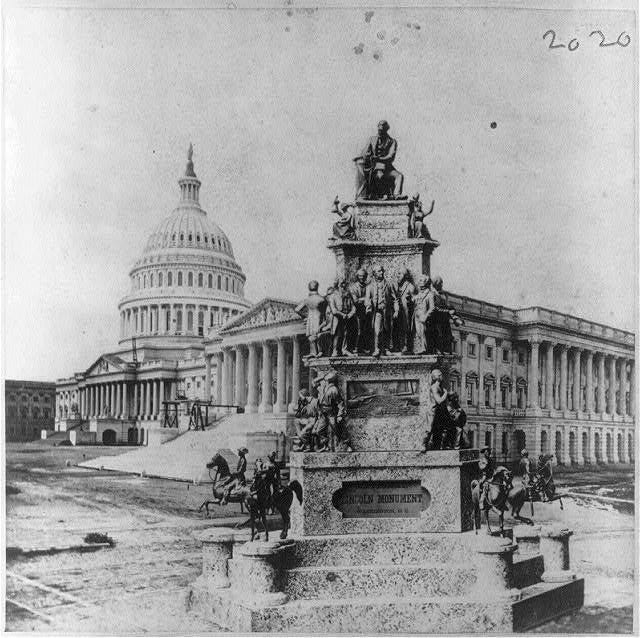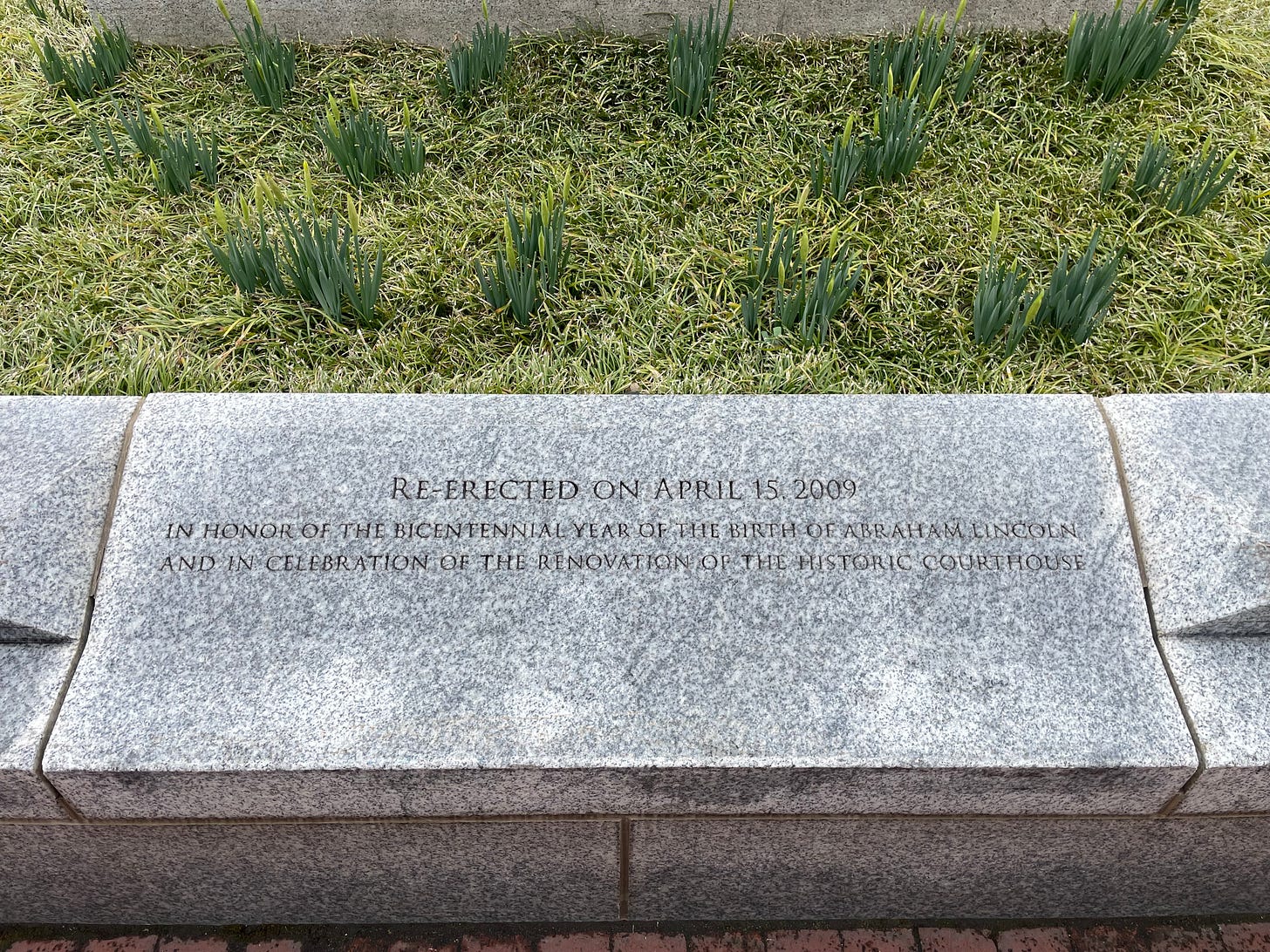We all have our Wikipedia guilty pleasures. One of mine is reading memorial construction sagas that involve design competitions, location questions, funding problems, decades long delays, and more. The final monument is often very different from what was envisioned initially, and even after a memorial is dedicated, it can be deemed too controversial or not grand enough to remain.
I visited DC this past week, and in preparation for my trip to Ford’s Theater, the site of President Abraham Lincoln’s assassination, I listened to a lecture on The Great Tours: Washington DC. (Side note: I’ve become a history buff by listening to Great Courses lectures at night in bed. I’m usually asleep within five to ten minutes so my understanding may not be deep, but I have greatly expanded the breadth of my knowledge. Some of my favorite lecturers are Bob Brier, Patrick Allitt, Edwin Barnhart, and Jennifer Paxton.)
I listened to the Ford’s Theater lecture around six a.m. the day I planned to visit. What I learned before I started snoozing again was that the first memorial for Lincoln in DC was not the Lincoln Memorial, which is well known for its Greek temple design and giant seated statue of the president. The Lincoln Memorial was dedicated in 1922, but the earliest memorial for Lincoln in DC was a statue erected in 1868 in front of what was then City Hall and what is now the Court of Appeals.
I scoped out this earlier memorial, which was sculpted by Lot Flannery, between my visit to the Clara Barton Missing Soldiers Office and Ford’s Theater during my day in DC:
According to Wikipedia, when the seven foot statue was initially erected, it sat atop an eighteen foot column and a six foot base. Even at this imposing height, there were calls for another larger memorial to Lincoln. (I’ll post more about this soon, but it’s worth mentioning that at this point in history the Washington Monument was not complete even though construction had started in 1848.)
The sculptor Clark Mills was tapped to design a grander memorial by the Lincoln Monument Association, which was founded in 1867. His plan was indeed epic: bronze, seventy feet high, multiple tiers, thirty-six figures, and Lincoln seated at the top signing the Emancipation Proclamation. According to the NPS website, Clark’s vision was never realized because of practical and political reasons. Wikipedia cites insufficient subscriptions. Both of these are vague enough to suggest there’s more to the story. Here’s the Lincoln Memorial that could have been:

The saga of the first memorial
The first Lincoln memorial, the statue by Lot Flannery, has been re-erected twice in its history. In 1923, the statue was rededicated after having been removed during building renovations and briefly lost. There was some talk of the statue not returning since the Lincoln Memorial was under construction at the time.
In 2006, the statue was taken away during another round of building renovations. This time it did not go missing, but was instead restored and rededicated in 2009.
Sadly, my DC visit was a little too early to see the daffodils bloom around the base of the statue of Lincoln. I did spot my first daffodils of the year, though, during my trip, and I’ll hopefully share those soon.







Great read!